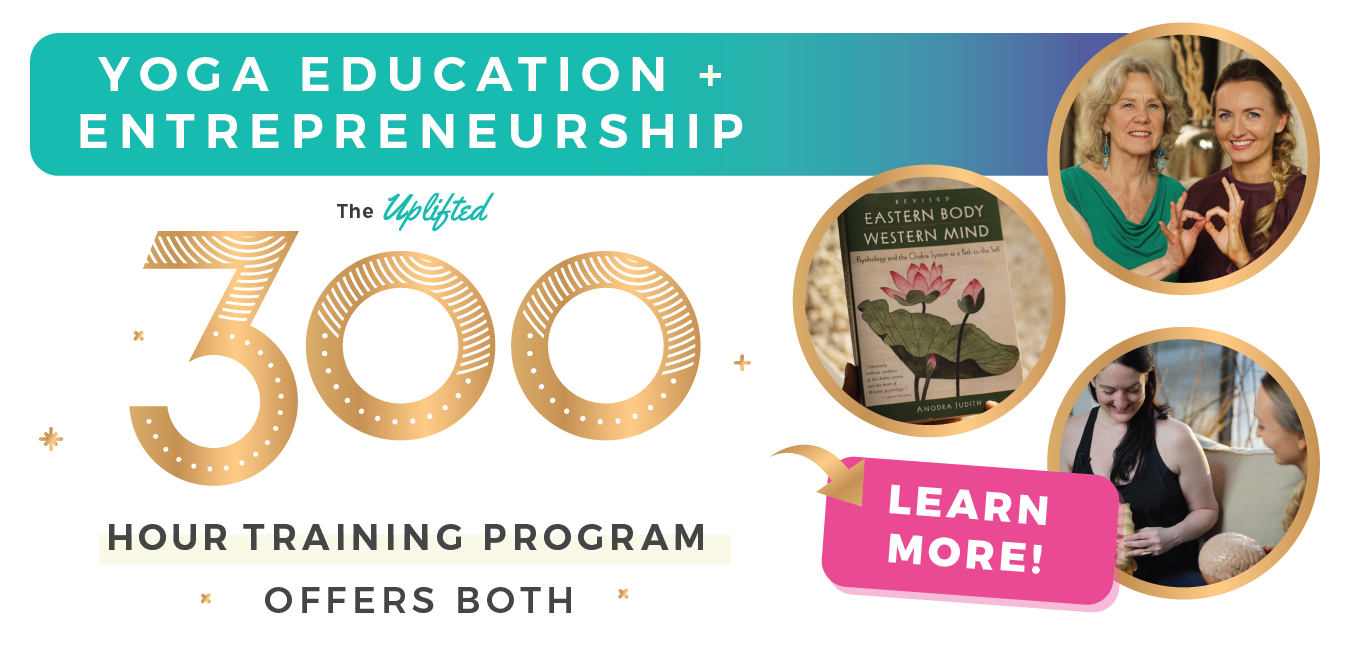(Sukhasana): Techniques, Benefits, Variations
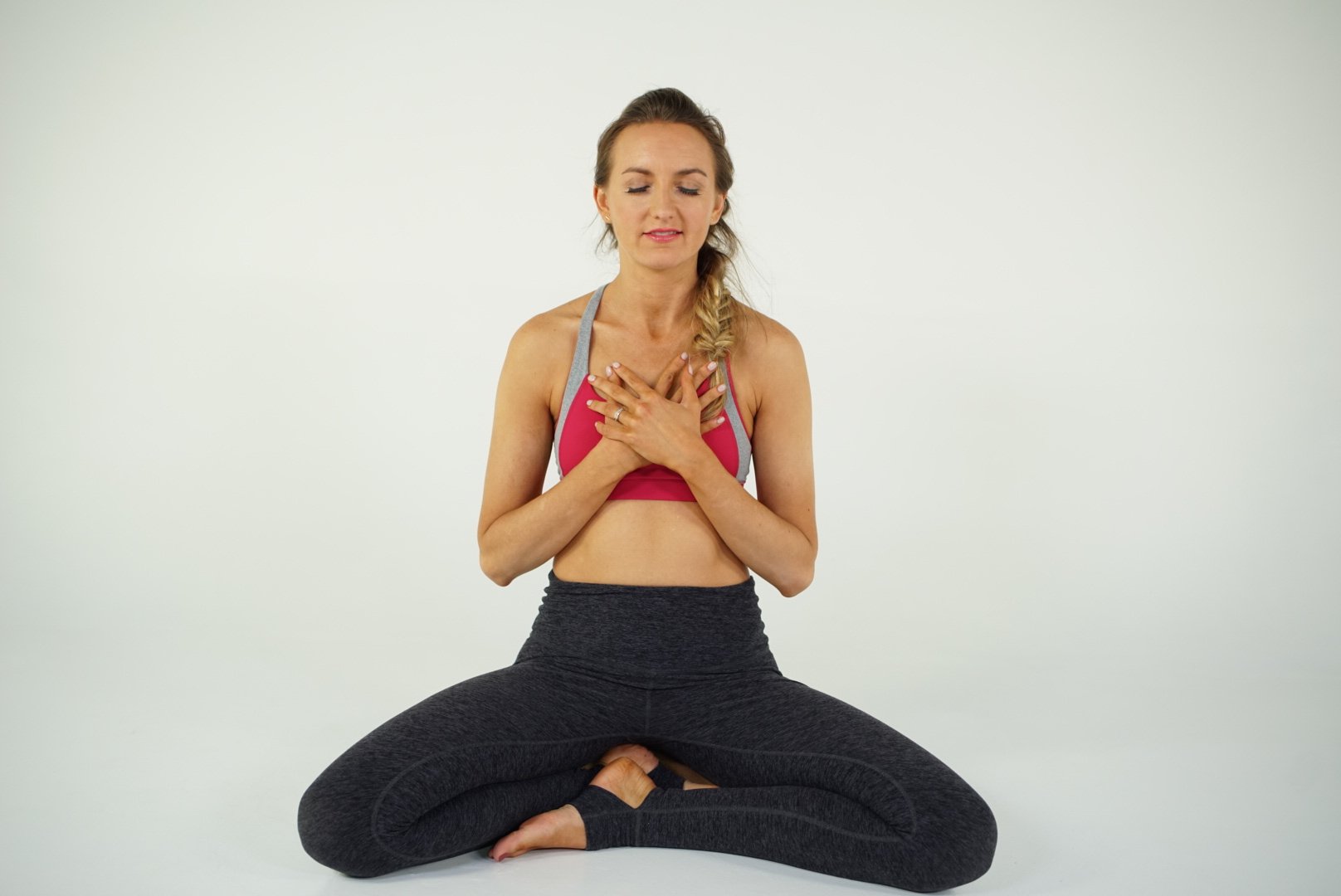
Easy Pose Prep & Practice
1
Come to a comfortable cross-legged position, knees stacked over the feet (if accessible).
2
Hands release onto lap, palms up or down.
3
Knit the ribs in and up, finding length in the front of the body, the back of the body and sides of the body. Pelvis and spine are upright and neutral.
4
Lift and open through the heart chest and collar bones, shoulders center over hips. On an exhalation, soften the tops of the shoulders away from the ears.
5
Head centers over pelvis, chin level to the floor, gaze is soft, breath is steady. Stay here for several rounds of breath
6
Switch the cross of the legs and repeat.
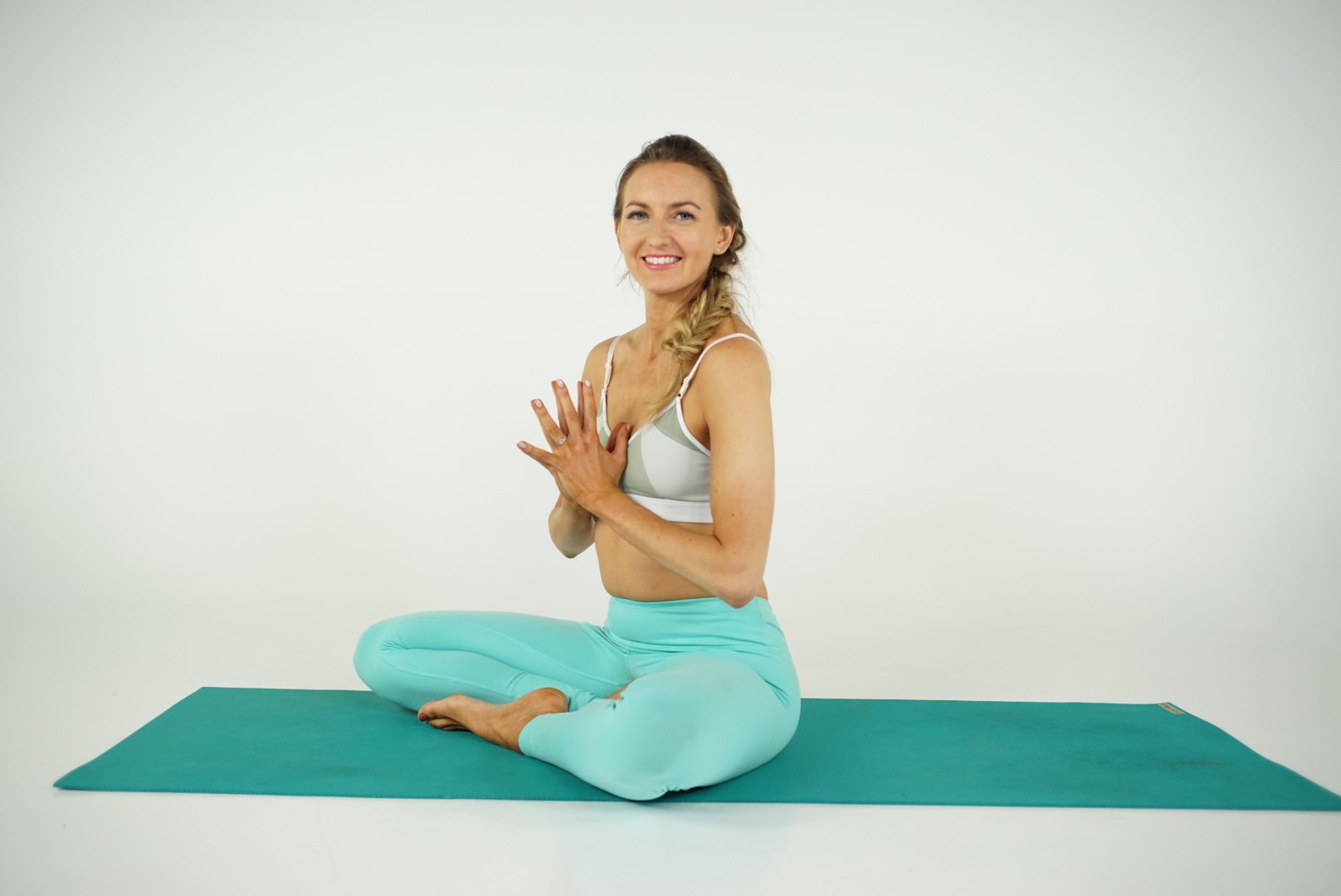
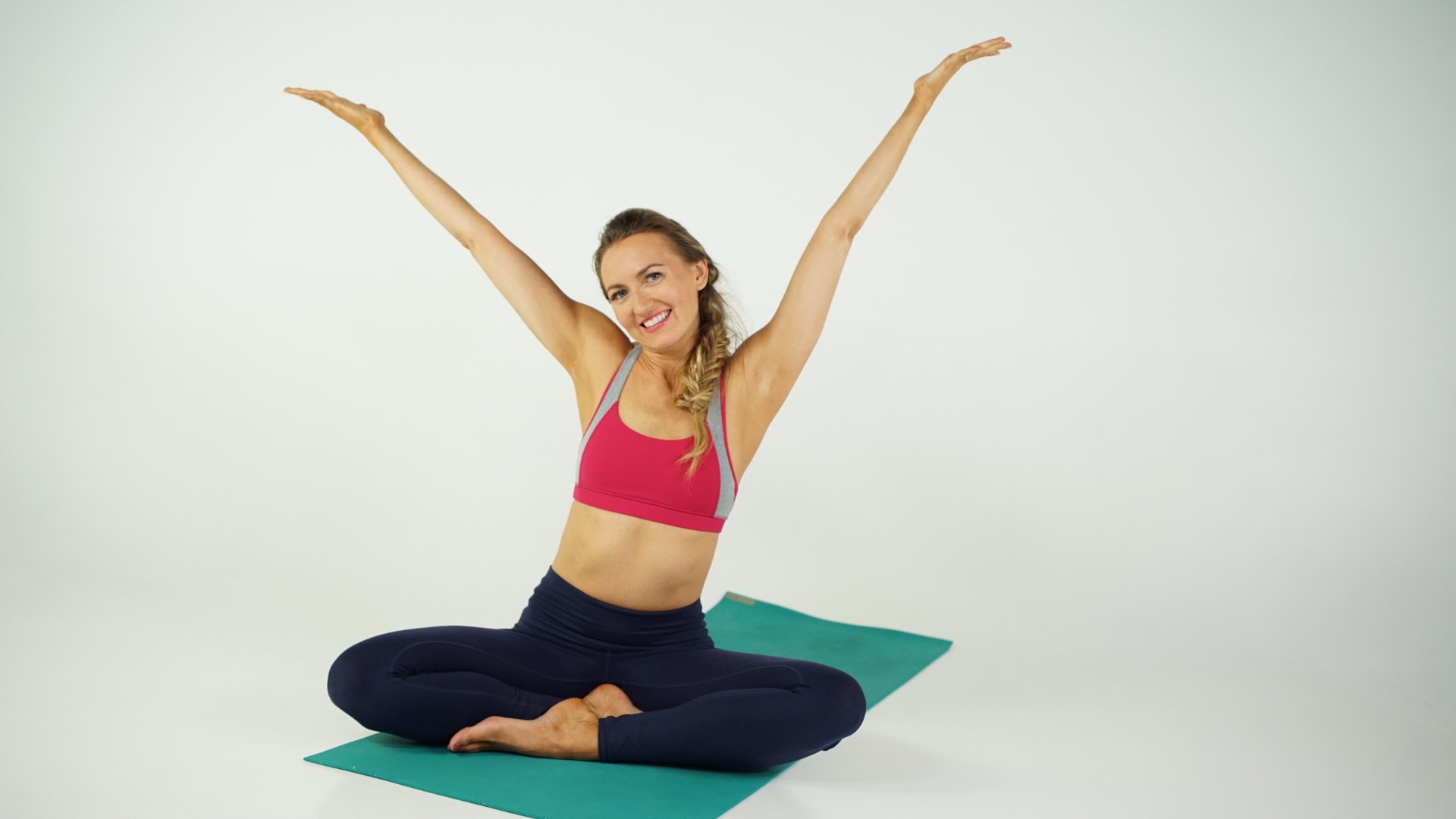
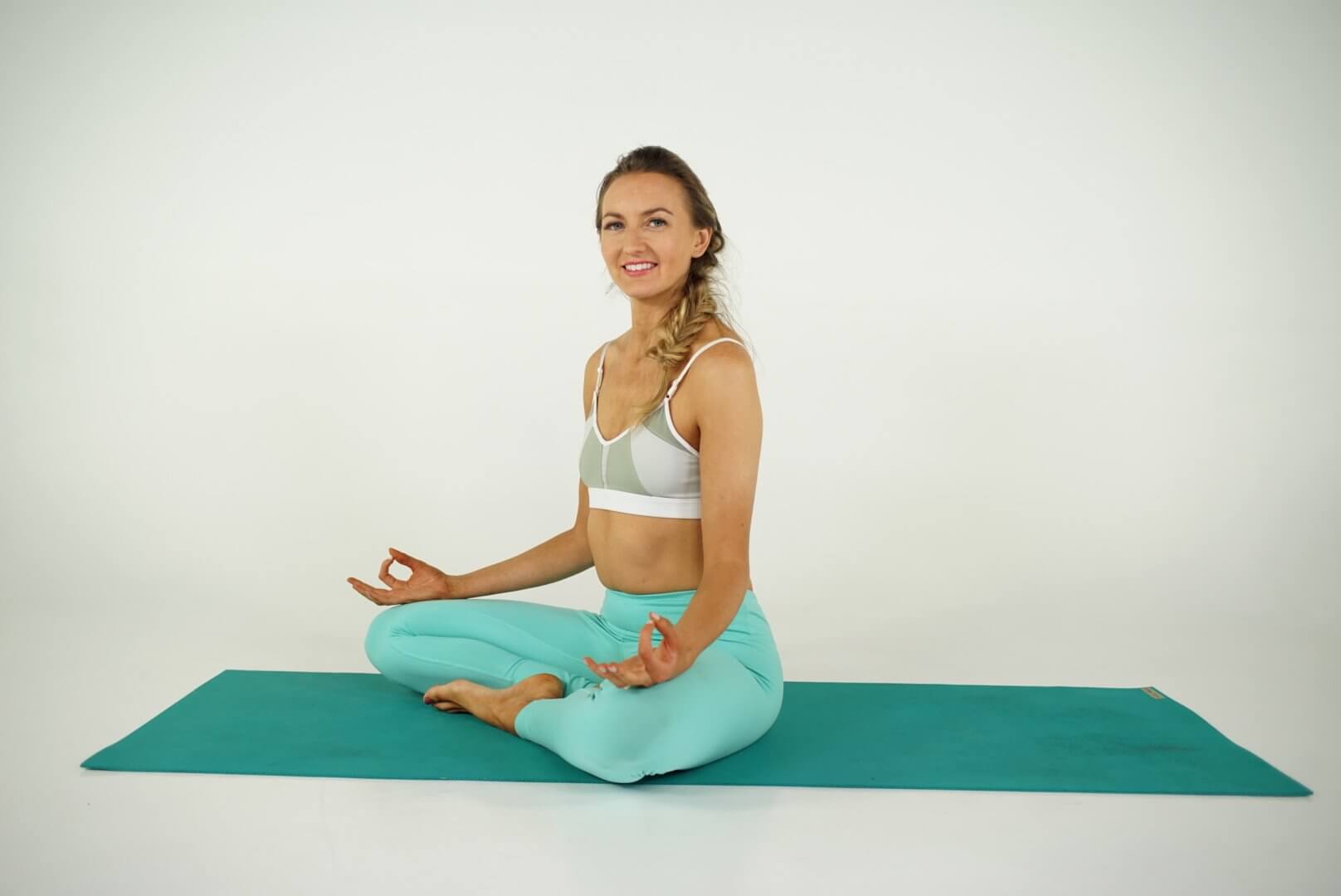
Variations/Modifications
- Bolster or blanket under hips/seat (knee or low back issues)
- Practice with back to a wall (low back issues)
- Practice in a chair with feet flat on the ground (knee, low back or hip issues)
- Blocks under knees (knee/hip issues)
Physical, Mental and Emotional Benefits
- Strengthens the spinal muscles
- Hip opening
- Promotes proper posture
- Induces calmness of mind
- Relieves stress and anxiety
Contraindications
- Hip, Knee or Low back Injury (see modifications)
Thoughtful Sequencing
Easy Pose (Sukhasana), Lateral Side Bends Right and Left. Switch cross of the legs, repeat side bends. Cow and Cat (Bitilasana and Marjyaryasana), Child’s Pose (Balasana)
Try Easy Pose On The Blog
A Few Notes
Despite the name of this pose – for many people it isn’t so easy (at least at first)! This cross-legged pose is taught in all styles of yoga. It’s generally used at the beginning of a practice to ground down, breathe and meditate. In Kundalini yoga, you may sit in an easy pose for longer periods of time to work on specific kriyas throughout a yoga practice. In vinyasa, hatha and yin, sukhasana is regularly practices as an opening pose to bring practitioners into the present, on their mat, in their space at the start of their practice.
Students new to yoga often struggle with restriction in the hips and knees when sitting in this pose. If everything hurts when you attempt this pose, your knees sneak up to your ears and it’s difficult to lengthen your spine, it’s probably best for you to sit on a block or two and possibly a blanket. Sitting on props will elevate the hips and allow the knees to relax towards the ground with ease, whilst taking the pressure off of the hips, and keeping the shoulders stacked on top of the pelvis.
It’s said that the physically demanding ashtanga primary series was designed for the sole purpose of allowing yogis to sit comfortably in full lotus at the end of the practice. While lotus includes a double cross (ankles over thighs as well as the more accessible cross of shin over shin in easy pose), the alignment objective is the same: Fully ground your pelvis and lengthen your spine with shoulders stacked over the hips. Many standing and seated yoga postures indeed do release tension and tightness in the hip area, enabling yogis to sit in meditation peacefully and comfortably at the conclusion of practice.
Easy pose is also the default position for practicing pranayama techniques, since it allows you to sit with a long spine and open chest, ready to receive and channel prana. The only way to unlock this pose is really to keep practicing it! Grab as many props as you need to get started, and slowly remove them as you find ease in the posture.
Want more yoga pose tutorials? See more in my Yoga Pose Directory.
Learn how to do 11 of the most popular yoga poses correctly. Free video + PDF download.


